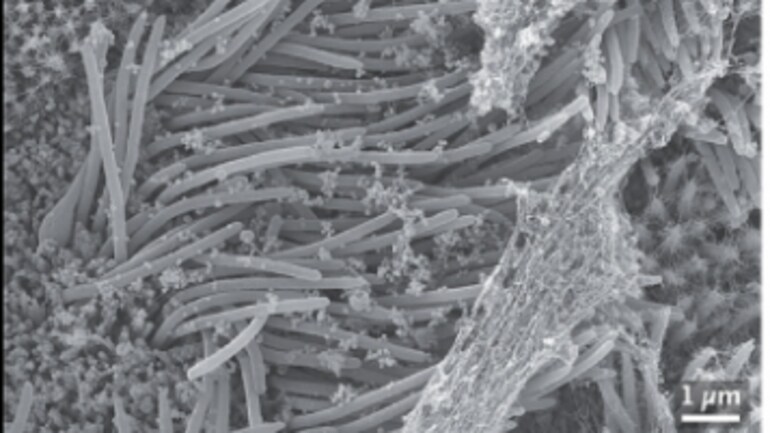
First images of Covid-19 infected cells strengthen case for masks to limit transmission
These images of novel coronavirus or Covid-19 (SARS-CoV-2) infecting lab-grown respiratory tract cells were obtained by researchers, including Camille Ehre, and published in the New England Journal of Medicine.
by India Today Web DeskImages now produced by scientists show the number of novel coronavirus particles produced and released per cell inside the lungs. These images of Covid-19 infecting lab-grown respiratory tract cells were obtained by researchers, including Camille Ehre.
Associated with the University of North Carolina (UNC) Children's Research Institute, Ehre generated these high-powered microscopic images to demonstrate the intensity of SARS-CoV-2 infection of the airways. The images show a large number of Covid-19 particles on human respiratory surfaces and how they can spread the infection across tissues, and to other people.
Researchers say the images show a complete, infectious form of SARS-CoV-2 as released by infected host cells onto respiratory surfaces.
In order to obtain these images, scientists injected the novel coronavirus into human bronchial epithelial cells of the lungs. These cells were then examined for a period of 96 hours using high-powered scanning electron microscopy.

Published later in the New England Journal of Medicine, these images were re-colourised. They show infected hairy ciliated cells with strands of mucus attached to cilia tips. Cilia are hair-like structures on the surface of airway epithelial cells. These structures transport mucus and trapped viruses from the lungs.
In fact, higher power magnification of the images shows the structure and density of Covid-19 as produced by the human airway epithelia. The images also demonstrate the high number of virions produced and released per cell inside the human respiratory system. A virion is an entire virus particle consisting of an outer protein shell (capsid) and an inner core of nucleic acid (either RNA or DNA).
Scientists have also pointed out that these images illustrate how a large viral load is a source for the spread of infection to multiple organs of a person infected with Covid-19. The viral load also determines the frequency of transmission of the virus to others.
These latest images of SARS-CoV-2 further strengthen the case for the use of face masks to restrict the transmission of Covid-19.
(With inputs from PTI)